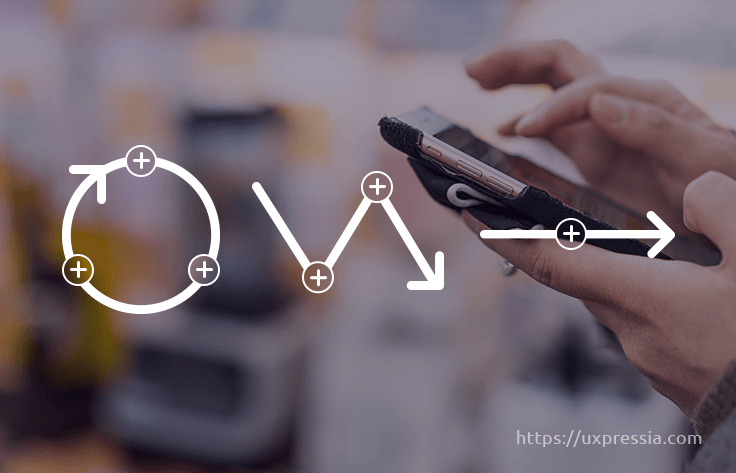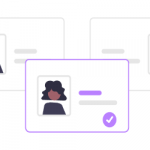What makes journeys so exciting? Not the road itself (though it can be and often is fun), but rather the stops we make along the way. The experience we have at each stop defines how happy we are at the end. At the same time, planning fun journeys is by far not easy. We don’t want to skip Disneyland as much as we don’t want to find ourselves in the middle of nowhere enjoying lame views. Well, customer journeys are no different from that. You’ll need to pay special attention to the sights (touchpoints) your customers are going to see. And to get rid of those leading people straight to your competitors. You want to get that how-to, don’t you? Stand by as UXPressia is always here to hook you up!
Touchpoints (or so we call stops in customer journeys) are the moments when users interact with the service. Every time your customer goes to your website sees your commercial, calls tech sup and talks to the staff - there’s a touchpoint. To create a Customer Journey Map and level up your UX, thus conversion, you need to know where those touchpoints happen. And where they shouldn’t happen at all. But first, let’s take a look at our journey type:

Keep things straight. Or linear. Linear journeys are probably the most common and primitive ones – you did some marketing, got people interested, they checked your stuff, bought something, you get the idea. Although these day linear journeys are becoming less common as businesses want to retain customers. Which brings us to:
The Hobbit, or There and Back Again. We’ll call it a cyclical journey for simplicity. With this one, customers start off with awareness, travel all the way to purchase but the journey doesn’t just stop there. It closes in a loop until users switch to another service or simply lose their interest.
Nonlinear. No fancies here. With this one only the start and the end are certain. The path itself may vary. Fun for customers, hard for you to analyze.
For each of those touchpoints can differ, so choose with caution depending on your business model.
Get them all
Once you got that settled, it’s time to identify touchpoints themselves. The easiest way to do that is to pretend you are the customer. Imagine what would be the steps you had to take to get what you wanted? You can interview real customers to see whether you got it right or go back to personas for inspiration. Here are a few stages to get you started:
Awareness. How does one get to know you exist? Billboard on a highway or a promising banner on Facebook? Two touch points down.
Research. Visiting your web page, reading the blog or checking reviews as well as asking friends and family – these too go right into your list.
Onboarding. People got interested and are ready to enroll! Still, many things can go wrong so don’t forget to include this stage.
Start using. Finally, you scored a touchdown! Still not the end. Another point you don’t want to skip as there may be a lot of game changers for the customer.
Feedback. People will tell you about their experience. Get this on paper too.
Support. Depending on this one, a reported issue can be either solved peacefully or raised to the tenth power.
The list goes on. Keep in mind that these are stages, not touchpoints. At each stage, there can be one, two or more touchpoints!
Watch out for landmines!

This process is tricky so here’s something to keep in mind while nailing touch points.
- You may kill it at each point, but if your UX lacks consistency the whole thing goes kaboom. Watch for those terrible gaps in UX path. You want your journey to be smooth and so do your customers. Do not disappoint them!
- Use the push-pull strategy. Ideally, each step should be designed in such a way that it pushes happy customers towards the next stage. And the next stage is designed to pull them from the previous one.
- No compromise. If you fail at one step, the entire journey can be compromised. Alas, people remember fails better than wins. Remember to eliminate all the gaps that can discourage customers too.
- Find as many points as you possibly can. The hidden ones included. What if your hobbit goes on a completely unexpected journey around the path you designed? Instead of buying that thing straight from the counter, people can go check online reviews without even leaving your store. To make sure you’re not missing points look at your service through the eyes of people.
- Ideally, each persona would have a path of their own. There’s no point of cloning personas if they all have the same path. Build journeys around their personalities. How will John behave in this situation? And what about Marry?
- Do not take channels for touch points. They are different. Period.
Nailing touchpoints in UXPressia
Creating a thorough path may take a lot of time, but don’t let it discourage you. It’s worth it as in the end, you’ll have a great tool to help you set priorities and avoid busywork.
UXPressia's Customer Journey Mapping Tool offers you a few sections where you can specify touchpoints and channels. Once visualized it will change the way you see your customers' journey for good!
And don’t forget – touchpoints are only half the way. Up next – mapping itself! We can’t wait to help you build your own CJM with our handy tools. Customer journey mapping has never been easier! And don't forget to check out our free CJM templates!





